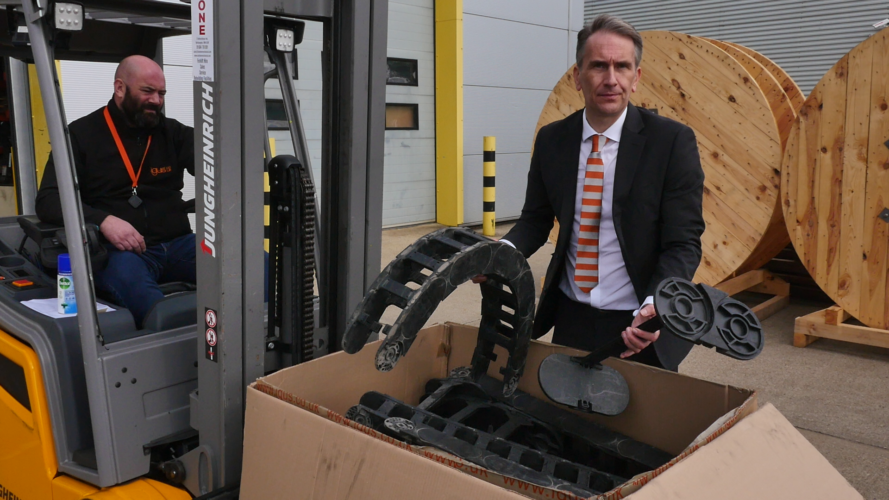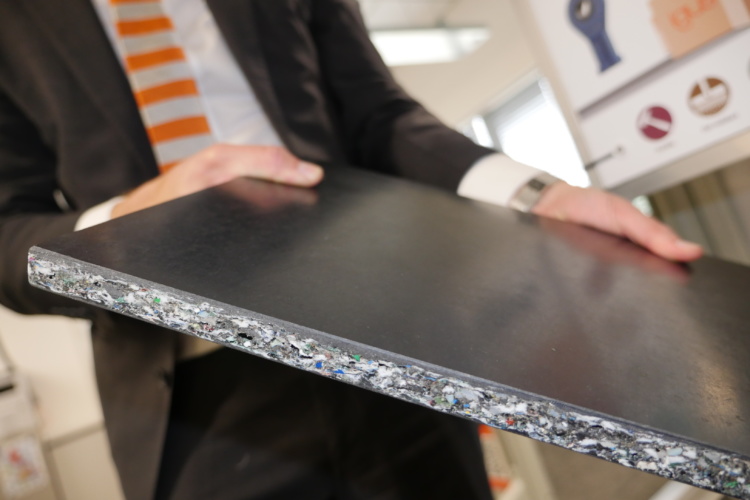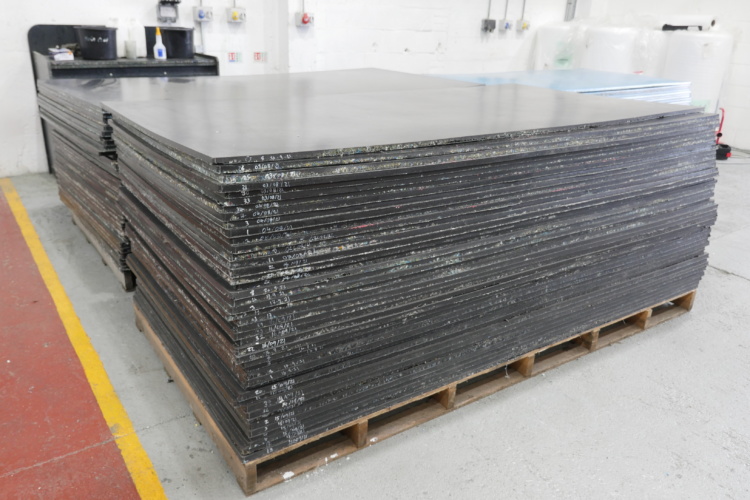In recent times, plastics have become something of a bête noire in popular thinking, a pariah material of which the mere mention conjures up negative images. Nature documentaries have helped highlight the particular issues around single use plastics and their tendency to end up in the oceans, blighting our seas and beaches, being ingested by all manner of creatures, and even infiltrating the food chain.
It’s easy to forget that, for the most part, plastics have become so ubiquitous because they are so useful, as well as being low-cost. As with most technological developments, the failures can generally be attributed to human and systemic shortcomings rather than a fundamental flaw in the technology itself. Plastics are no more inherently bad than the internet, for example, but both have significant capacity to cause damage when used carelessly.

As a company whose entire business is based around plastics, igus is acutely aware of the associated image problem. Its polymer bearings and energy chains (e-chains) sit at the opposite end of the spectrum to single use plastics, designed to last for millions of cycles rather than thrown away after a brief, solitary moment of utility. Nonetheless, until recently, its energy chains – found everywhere from offshore rigs and cranes to windscreen wipers - were largely being sent to landfill once they reached the end of their long service lives.
“We test all of our products to destruction in a way that means we can offer guarantees,” Justin Leonard, e-chain director at igus UK, told The Engineer. “With an environmental hat on, what we’re saying to the customer is that you’ve got a very long guaranteed life for your product.”
Launched by the company in 2021, the ‘Chainge’ programme is aiming to breathe new life into those products once they eventually do reach end of service. Energy chains are highly engineered devices that are manufactured using virgin plastic in order to attain the required performance levels. For this reason, old e-chains can’t simply be made into new ones. However, igus is now embracing ways to divert the chains from landfill via its new initiative.
“We have to accept there’s an end of life here,” said Leonard. “We can’t use it for our own products again, because they are quite technical plastics with high integrity.”
Chainge sees igus collecting old energy chains – both its own and those of its competitors – and directing them into different recycling streams, rewarding participating customers to the tune of 53p per kg of chains returned. One of the streams is a regular commercial recycling route, with granulated e-chain plastic finding reuse in applications ranging from office furniture to the plastic trim found in vehicles. The other stream is a much more circular practice, which sees recycled e-chain plastic combined with single-use plastics to form a type of multi-use hoarding known as Storm Boards that igus and its customers take ownership of and use in a variety of roles.

“Storm Board take single use plastics and they turn them into plastic boards that are kind of like hoarding, so anything that you would typically use wood products for,” Leonard explained. “They are multi-use. With wood, if it gets out in the rain it can swell and become single use – chipboard and MDF and things like this – but these can be reused.”
The Storm Boards are manufactured by igus’s recycling partner MyWaste, based in Hull. First, the e-chains are fed into a shredder to reduce the size of the parts to around 20mm. These parts then pass to a granulator where the size is further reduced down to 5mm, small enough to be blended. The granulated e-chain material is then fed into a mixer where it is combined with single-use plastics to make an homogenous material for the board production.
“The grinding process, shredding process, is not changed for our product at all,” said Leonard. “They don’t need different rollers, there’s no extra energy required. It’s the same as if it was a plastic bottle or anything else.”
Once blended with singles use plastics, the granulated material is sandwiched in a board press between two layers of fine polymer, with 200°C heat applied from both sides to cure the mixture. After around 10 minutes, the board is removed from the press, excess material is trimmed and it is stacked, ready for use in its second life.
“For the heating process to work, we have to mix it with single use plastics,” said Leonard. “If it was 100 per cent e-chain, that machine would probably have to be different because it would need a much higher temperature.
“It’s not entirely igus material because ours is a very hard plastic that’s got a very high melting temperature, so it has to be an amalgam. But that’s also a virtuous thing because it means we’re incorporating single use plastic bottles and that sort of thing.”

The first customer e-chain returns in the UK came from an airport elevator and a large-scale metal component machining site. Although the Chainge project is less than a year old, around 22 tonnes of e-chains have been returned worldwide, with 4-5 tonnes of that in the UK. It’s a relative drop in the ocean of the total plastic products sold by igus each year, but it is demonstrative of the type of practices engineering and manufacturing need to embrace in order to transition to a more circular economy.
Storm Boards have a variety of uses from hoarding and shop fittings to outdoor furniture, bathroom cubicles, sheds, climbing walls and compost bins. And while the company uses a range of different waste streams to produce the boards, it encourages companies to take responsibility for their own waste and try and find uses cases for the products produced using their own plastic.
READ MORE
Dr Jenifer Baxter on the challenges of recycling plastics
“Storm Board like you to buy the boards with the material you send them,” said Leonard. “What they’re trying to avoid becoming is a sort of dumping ground for people’s waste. They will take waste from people and turn it into boards and sell it, but they’re good at pinning you down and saying ‘How many boards can you use? How many will you take?’…because they would rather facilitate a circular process.”
In igus’s case, it has found several uses for the Storm Boards produced using its e-chains, with the primary one being display stands to showcase its products. The company has been replacing aluminium panels in display stands with the boards, bringing the e-chains full circle and kitting out these stands for customers with recycled plastic from their own disused chains.
“Aluminium panels are very high energy to manufacture, quite high integrity and also costly,” said Leonard. “We worked with Storm Board to develop the same thing but with polymer, with recycled boards.”
While the overall amounts may be small, the programme is still in its infancy, and it’s encouraging to see companies taking a more active and responsible role in dealing with the material waste accruing from their commercial activities.
“The (Storm Board) process will be driven by what we can consume rather than what we collect,” said Leonard. “Any excess from what we collect will go into the normal commercial route.
“So anything we can’t use in a circular way will go into that market…but we’re trying to be responsible and use what we’ve produced first.”




Plasma technique converts landfill methane to jet fuel
David the example you gave illustrates the effectiveness of the regulatory framework landfill sites operate within...